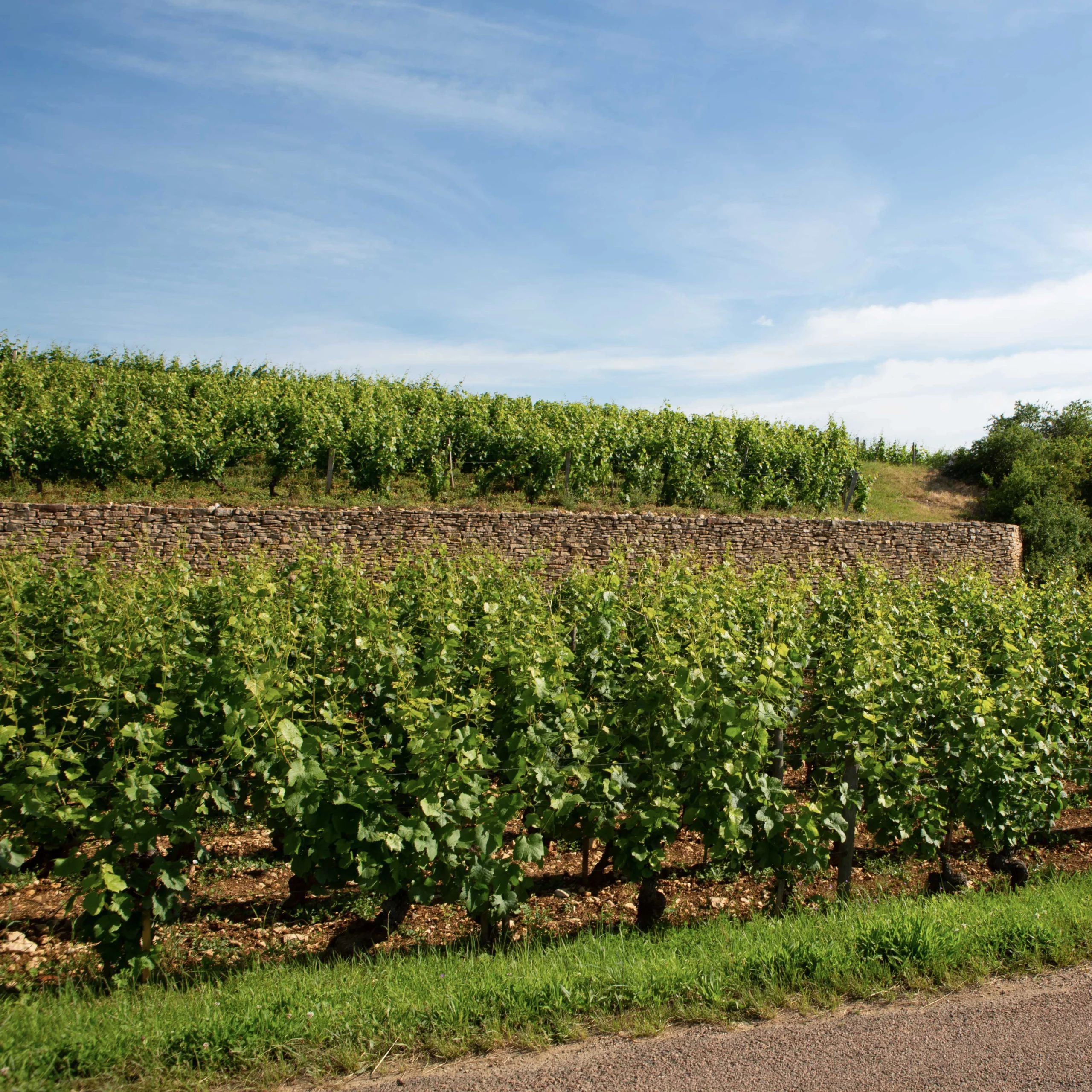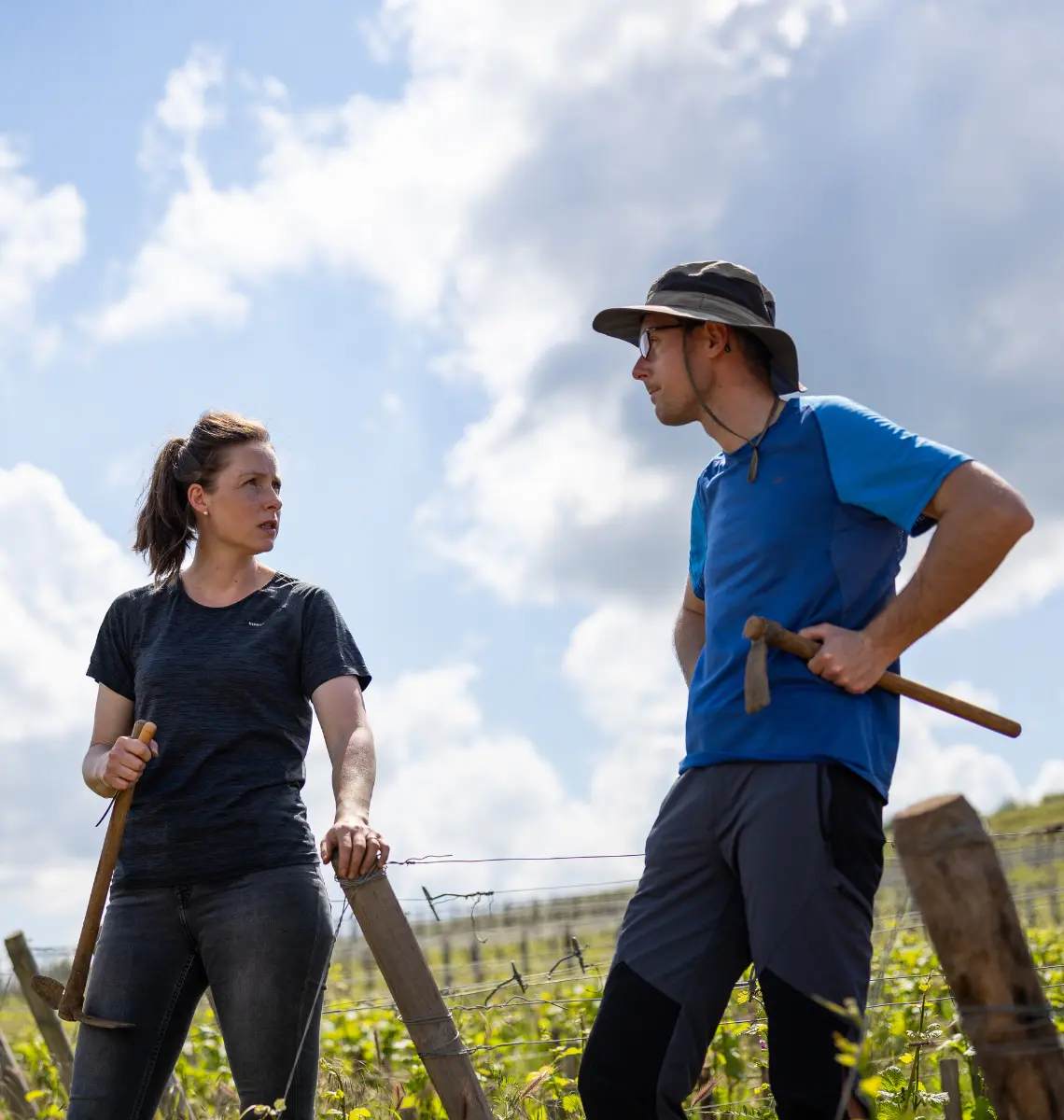
Viticulture

Work in the vineyard
Working in the vineyard takes a long time, so you need to be meticulous. Every decision made throughout the year will have an impact on the quality of the vintage, potentially for several years afterwards.
Over the course of his studies, Etienne Grivot was particularly struck by the imbalance of fertiliser used in the 1960s and 1970s, so he asked his father to stop using all mineral fertilisers and switch to organic in 1978.
From that day on, ensuring continuity of organic soil and vines became evident. The estate is now run on organic farming principles. Promoting biodiversity and interactions with micro-organisms enables integrated viticulture with the sole objective of producing high-quality grapes.

The Parcel
With a planting density of 11,000 vines per hectare, competition between vines contributes to low yields, forcing them to reach deep into the subsoil for the nutrients and water they need. Light leaf thinning on the north-east side of the rows is carried out throughout the parcel to allow air to circulate properly around the bunches, to avoid grey rot and improve ripening.
This work is hugely important to achieving quality. To keep the average vine age high in our vineyard (60 years on average), transplanting is the best solution. Every vine that dies is routinely replaced, as we love the old vines and the small, concentrated grapes they produce.


Fertiliser
Very littler fertiliser is used, and we only use organic. Through our farming practices, we are able to improve the structure and microbial life of the soil. Our entire estate is ploughed and today, 3 hectares are done by horse.
Pest and disease control in the vineyard is carried out using the “lutte raisonnée” approach which uses reasonable force while remaining environmentally conscious. We use all plant protection methods that use natural mechanisms, and the concept of biocontrol predominates in our vines. We set the harvest date by making regular visits to the vineyard. Samples are taken for analysis and to determine how ripe the grapes are.
We pay particular attention to the ripeness of the skin and its tannins. The seed also needs to be perfectly ripe with liquorice notes.

